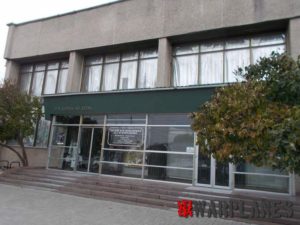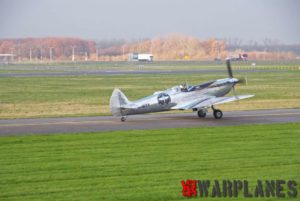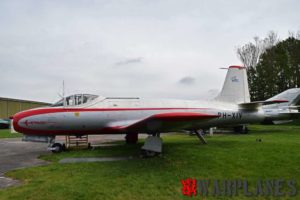Hawker Hurricane Mk IVRP in Museum of Aviation in Belgrade- Serbia
The Hawker Hurricane is a British single-seat fighter aircraft that was designed and predominantly built by Hawker Aircraft Ltd. Some production of the Hurricane was carried out in Canada by the Canada Car and Foundry Co Ltd. Although largely overshadowed by the Supermarine Spitfire, the aircraft became renowned during the Battle of Britain.The 1930s design evolved through several versions and adaptations, resulting in a series of aircraft which acted as interceptor-fighters, fighter-bombers (also called “Hurribombers”), and ground support aircraft. Further versions known as the Sea Hurricane had modifications which enabled operation from ships. Some were converted as catapult-launched convoy escorts, known as “Hurricats”. Together with the Spitfire, the Hurricane was significant in enabling the Royal Air Force (RAF) to win the Battle of Britain of 1940, accounting for the majority of the RAF’s air victories. More than 14,000 Hurricanes were built by the end of 1944 (including about 1,200 converted to Sea Hurricanes and some 1,400 built in Canada), and served in all the major theatres of the Second World War.

Hurricane Mk IV
The last major change to the Hurricane was the introduction of the “universal Wing”, a single design able to mount two 250 lb or 500 lb (110 or 230 kg) bombs, two 40 mm (1.57 in) Vickers S guns, drop tanks or eight “60 pounder” RP-3 rockets. Two .303 in Brownings were fitted to aid aiming of the heavier armament. The new design also incorporated the improved Merlin 24 or 27 engines of 1,620 hp (1,208 kW), equipped with dust filters for desert operations. The Merlin 27 had a redesigned oil system that was better suited to operations in the tropics, and which was rated at a slightly lower altitude in keeping with the Hurricane’s new role as a close-support fighter. The radiator was deeper and armoured. Additional armour was also fitted around the engine.
Text: Wikipedia
Photos: Darko Mladenovic
Darko Mladenovic




























